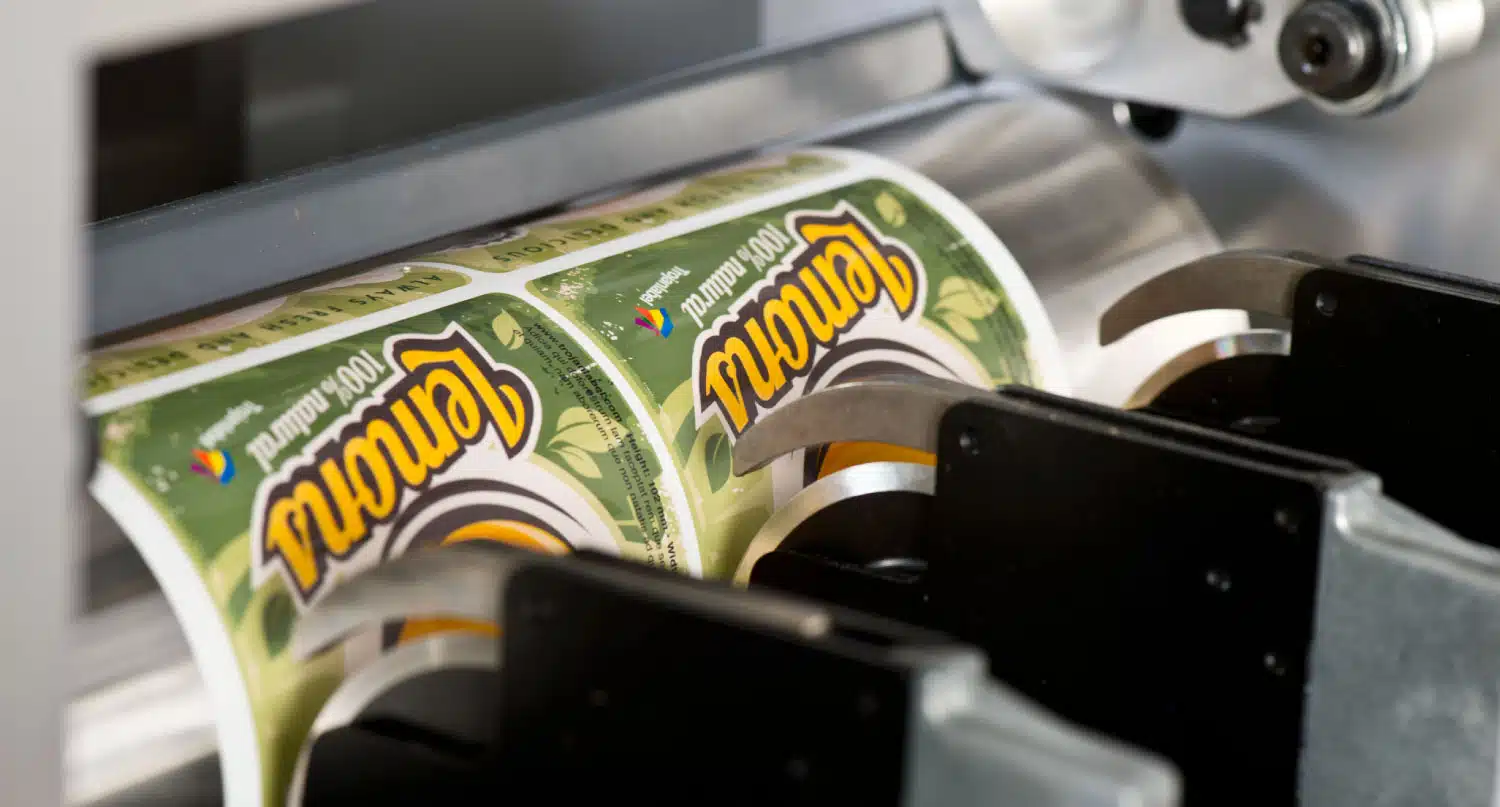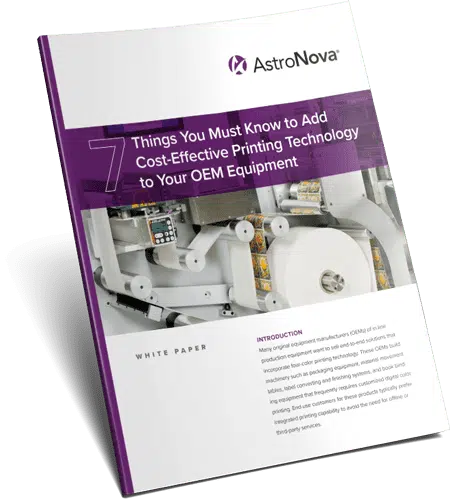
Original equipment manufacturers (OEMs) take heed: More and more customers are requesting the integration of four-color label printing capabilities into their packaging equipment, material movement tables, label converting and finishing systems, and bookbinding equipment — to eliminate their necessity for offline or third-party label printing services.
Key trends are driving their demands. The first is their desire for four-color printing. More than ever, companies want to display their brands in vivid color across containers, labels, and packaging. They also require cost-effective, on-demand label printing for small batches. A related trend is the growing need for customized printing. Another is a commitment to sustainability and environmental responsibility, which can be supported by printing directly on boxes and packaging, thereby reducing cost and waste.
OEMs should consider these seven key strategies when assessing label printing technology for their production machinery:
- Select a supplier that specializes in label printing systems tailor-made for OEM systems. The supplier should have deep experience serving OEM machine builders, be staffed with mechanical engineers and software developers, and have products that focus on providing a total solution around the print head. Such specialists can simplify integration, add functionality and capabilities, and provide the inks, consumables, paper, and labels that enable the OEM to create a supplemental revenue stream.
- Consider the supplier’s engineering and technical resources that must work together seamlessly to integrate and develop the required printing features and capabilities. Integrating printing technology in production equipment is not a plug-and-play exercise. Customers will demand unique functions and capabilities to address their needs and user experience. They will require a customized label printing solution with strong in-house or external engineering resources for machine integration.
- Demand simple and convenient integration of full-featured printing technology in your OEM production machinery. From a design standpoint, a supplier’s printers should make it easy for OEMs to add unique marketing identification properties to differentiate their products. The label printers should have fewer connections and touchpoints that enable rapid installation, plus incorporate I/O communications ports that integrate with the OEM’s machinery. Form factors should be lightweight and compact to fit in small spaces. Access to relevant technical documentation should be quick and easy.
- Investigate customer support’s availability and quality for any requests about printing-related issues. The printing supplier’s engineering resources will be critical to ensure the OEM can provide responsive and competent service. Resources should be globally positioned with regional locations for rapid spare parts and supplies shipment. Remote support and analytic functionality should be built into its technology to enable online technical support and product optimization.
- Ensure the cost-effectiveness of the solution over the long term. Four-color label printing solutions with small batch and custom printing capabilities are highly affordable. Consider such potential hidden costs as the required amount of training, changeover times and costs, projected waste and operating costs, and solution quality and maintenance requirements.
- Add a recurring revenue stream of high-value spare parts, ink, media, and other consumables. The printer supplier should set up an OEM in this line of business, provide the products for resale, and offer the technology needed for the OEM to secure its revenue stream.
- Support customer sustainability goals, including printing technology that employs environmentally responsible consumables and inks to support manufacturing companies emphasizing sustainability and focusing on environmental, social, and governance priorities. Printing technology in production equipment can reduce waste with direct-to-product and direct-to-packaging printing technologies.
OEM machine builders seeking to meet customer demand trends to add color label printing technology to their production systems should work with a printing specialist on these seven strategies to simplify and accelerate the integration process and provide products that add competitive advantage and complementary revenue streams.
OEMs: Delve deeper into the subject to explore the intricacies of integrating printing systems into production machinery. Examine the market drivers and trends propelling in-line printing technology and uncover the potential for market leadership and new revenue streams by incorporating this capability. Get your copy of the new white paper: “7 Things You Must Know to Add Cost-Effective Printing Technology to Your OEM Equipment.”





